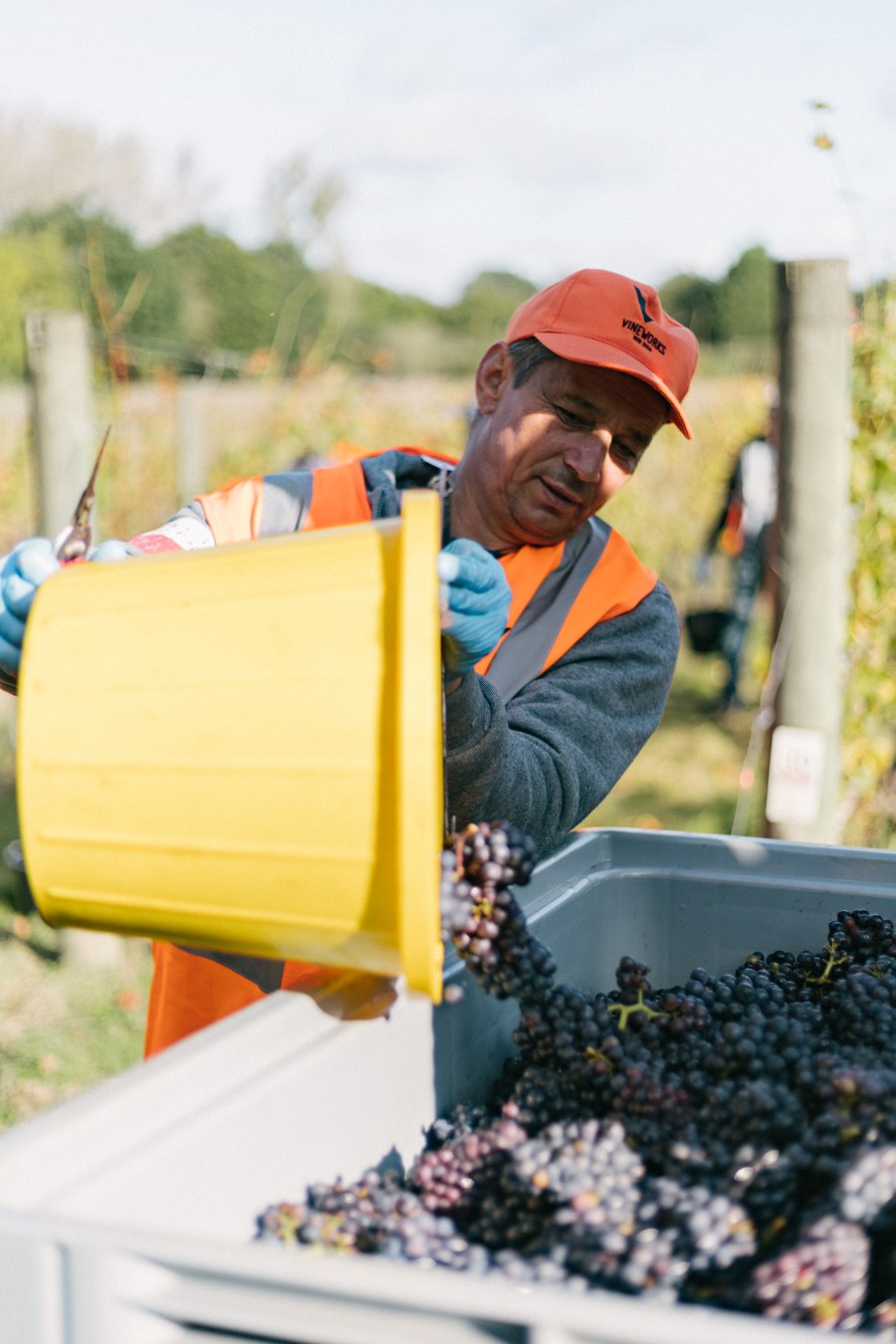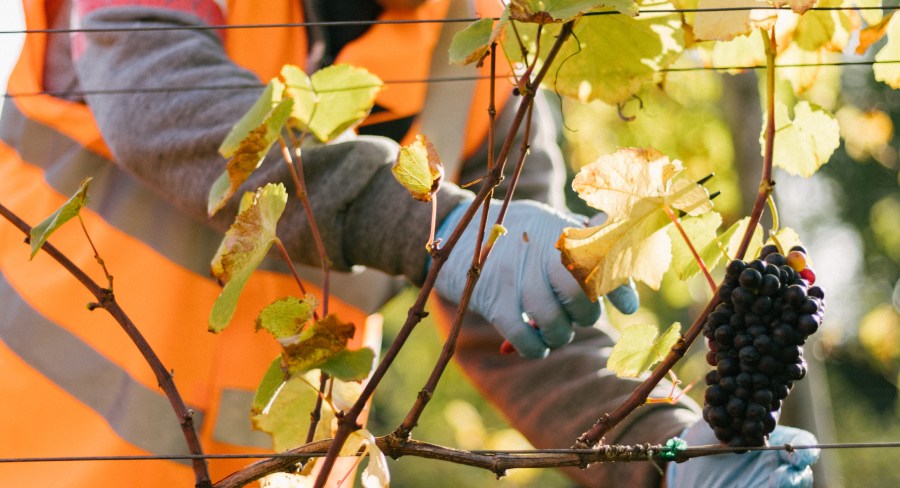In the vineyard, as harvest approaches, it is crucial to prepare thoroughly for its execution to ensure success. Whether you choose manual, mechanical, or a combination of both methods, meticulous planning and coordination are essential.
Here are some actions that our viticulturists at VineWorks consider key for a successful harvest:
Canopy management
- Tucking canes: Ensure all canes are properly tucked in to support growth and fruit exposure.
- Clipping wires: Secure wires with foliage clips to maintain the canopy structure.
- Fruit zone foliage stripping: Remove foliage around the fruit zone on both sides to enhance fruit exposure and the ease of manual picking.
- Tidy under-vine strip: Maintain a tidy under-vine area on which to place crates and prevent damage from machinery.
- Mowing alleyways: Keep alleyways mowed to facilitate easier movement for machinery and pickers.
Pre-harvest coordination
- Yield estimations: Constantly refine estimated yields and communicate these with the winemaker/or buyer to determine the optimal harvest date.
- Booking resources: Arrange for picking teams/harvest machines, winery space, and transportation several weeks in advance.
- Synchronisation: As harvest gets closer the picking dates will change. Remaining flexible and communicating regular updates with all parties involved (pickers, machinery, winery, and transport) is key to ensuring smooth operations when external challenges such as weather, labour and machinery issues arise.
Hand harvesting considerations
- Picker efficiency: Plan for 400kg-500kg of fruit per picker per day, recognising that small and large bunches take equal time to pick.
- Equipment requirements:
– Picking crates: Sufficient for two days’ harvest, placed under vines a day before. When sourcing crates, consider aspects like size, handling, and stacking ability.
– Secateurs: Sharp, clean, numbered pairs, with spares.
– Buckets: Source plastic builders buckets with handles. One per picker, plus some spares.
– Disposable gloves: Blue, food-grade style.
– Plasters: Blue, food-grade for minor injuries.
Machine harvesting considerations
- Trellis system: Vertical shoot positioning (VSP) is considered the most compatible design for machine harvesting.
- Headlands: Harvest machines are slightly longer than other pieces of vineyard machinery and will require sufficient turning space to avoid unnecessary downtime.
- Slope/topography: Steep slopes and side-cambers can represent problems when operating grape harvesting machinery.
- Appropriate bins: Machine harvested fruit needs to be collected into the appropriate dolav-style bins. Check with the winery in advance as to whether they are able to accept these.
Ground crew and equipment
- Team composition: For manual picking, one tractor driver and two collectors per six tonnes of fruit per day. For machine harvesting, one operator for the machine harvester plus one operator driving a tractor with trailer.
- Tractor, trailers and forks: Ensure the tractor is fueled and serviced, and the trailer (for either bins or crates) is hooked up and ready to go. If using forks, attach ready in advance, ensure the pallets used are compatible and have side frames to improve stability when collecting crates.
- Ground crew supplies: Gloves and necessary tools for efficient crate collection.
Palletising
- Pallet specifications: Use pallets that can handle 300kg-500kg of fruit, discarding those unsuitable for pallet trucks.
- Additional supplies: Lids for dolav-style bins, pallet wrap, labels, permanent markers, scales for weight calculation, a logbook, and a pallet truck or forklift.
Loading and transport
- Loading equipment: Forklift or similar equipment for loading the lorry.
- Transport logistics: Arrange a lorry and driver for transportation to the winery.
- Documentation: Provide CAD documents with every load for the winery/buyer.
The ultimate objective is to transport the grapes swiftly and safely, minimising damage and maximising efficiency. By carefully planning equipment, logistics, and coordination, a successful and fruitful 2024 harvest season can be ensured.

For more like this, sign up for the FREE Vineyard newsletter here and receive all the latest viticulture news, reviews and insight




